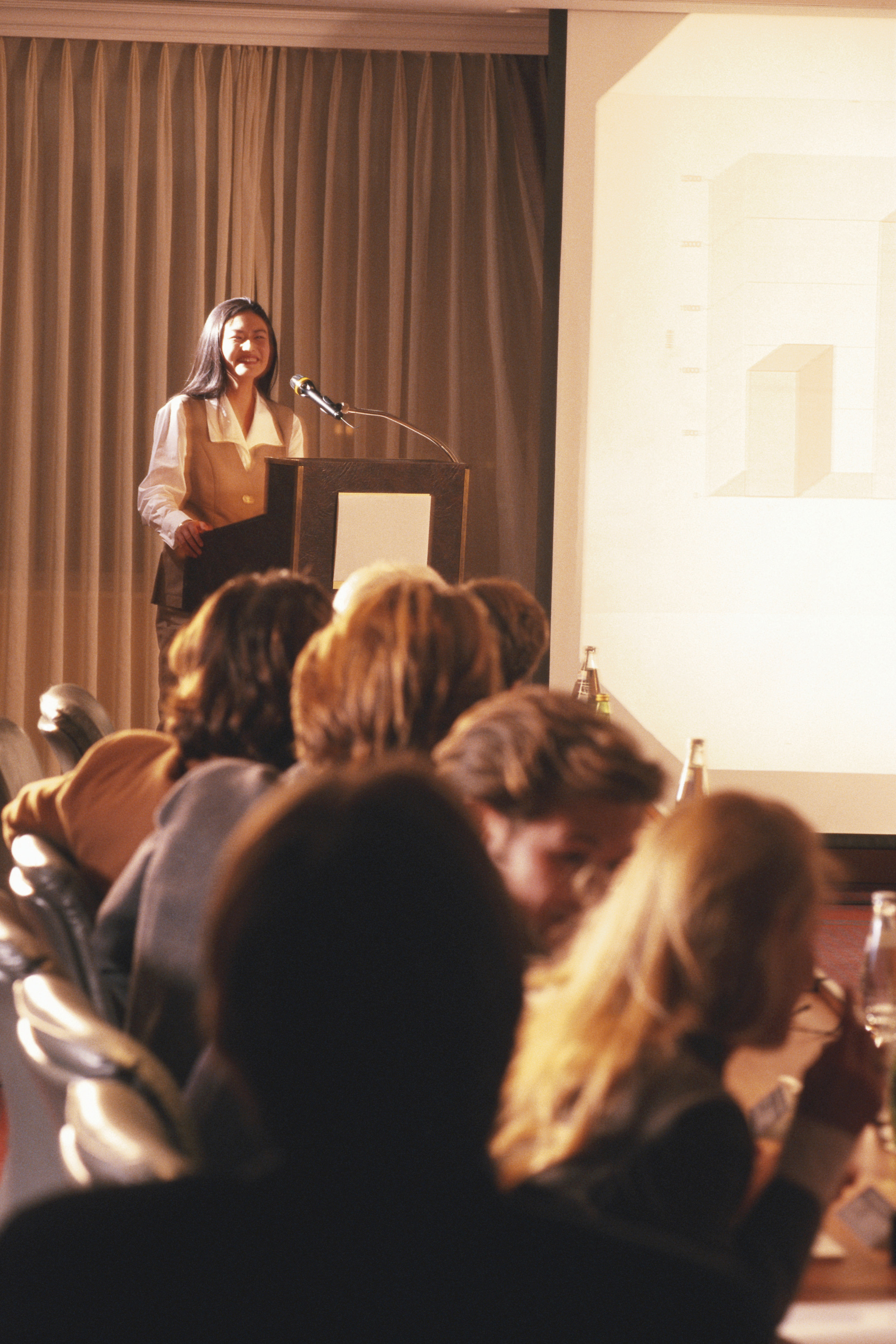This is “Presenting Your Research”, section 13.2 from the book Sociological Inquiry Principles: Qualitative and Quantitative Methods (v. 1.0). For details on it (including licensing), click here.
For more information on the source of this book, or why it is available for free, please see the project's home page. You can browse or download additional books there. To download a .zip file containing this book to use offline, simply click here.
13.2 Presenting Your Research
Learning Objectives
- Identify the major principles of formal presentations of research.
- Describe roundtable presentations and their benefits.
- Discuss the purpose of and formatting principles for poster presentations.
Presenting your research is an excellent way to get feedback on your work. Professional sociologists often make presentations to their peers to prepare for more formally writing up and eventually publishing their work. Presentations might be formal talks, either as part of a panel at a professional conference or to some other group of peers or other interested parties; less formal roundtable discussions, another common professional conference format; or posters that are displayed in some specially designated area. We’ll look at all three presentation formats here.
When preparing a formal talk, it is very important to get details well in advance about how long your presentation is expected to last and whether any visual aids such as video or PowerPoint slides are expected by your audience. At conferences, the typical formal talk is usually expected to last between 15 and 20 minutes. While this may sound like a torturously lengthy amount of time, you’ll be amazed the first time you present formally by how easily time can fly. Once a researcher gets into the groove of talking about something as near and dear to him as his very own research, it is common for him to become so engrossed in it and enamored of the sound of his own voice that he forgets to watch the clock and finds himself being dragged offstage after giving only an introduction of his research method! To avoid this all-too-common occurrence, it is crucial that you repeatedly practice your presentation in advance—and time yourself.
Figure 13.2

Practice makes perfect in formal presentations.
© Thinkstock
One stumbling block in formal presentations of research work is setting up the study or problem the research addresses. Keep in mind that with limited time, audience members will be more interested to hear about your original work than to hear you cite a long list of previous studies to introduce your own research. While in scholarly written reports of your work you must discuss the studies that have come before yours, in a presentation of your work the key is to use what precious time you have to highlight your work. Whatever you do in your formal presentation, do not read your paper verbatim. Nothing will bore an audience more quickly than that. Highlight only the key points of your study. These generally include your research question, your methodological approach, your major findings, and a few final takeaways.
In less formal roundtable presentationsOne way of presenting results of scholarly research. Typically less formal than a panel presentation, it emphasizes discussion among those present at the table. of your work, the aim is usually to help stimulate a conversation about a topic. The time you are given to present may be slightly shorter than in a formal presentation, and you’ll also be expected to participate in the conversation that follows all presenters’ talks. Roundtables can be especially useful when your research is in the earlier stages of development. Perhaps you’ve conducted a pilot study and you’d like to talk through some of your findings and get some ideas about where to take the study next. A roundtable is an excellent place to get some suggestions and also get a preview of the objections reviewers may raise with respect to your conclusions or your approach to the work. Roundtables are also great places to network and meet other scholars who share a common interest with you.
Figure 13.3

One purpose of a roundtable presentation is to generate discussion among the group.
© Thinkstock
Finally, in a poster presentationA less formal presentation format that is a visual representation of your research. you visually represent your work. Just as you wouldn’t read a paper verbatim in a formal presentation, avoid at all costs printing and pasting your paper onto a poster board. Instead, think about how to tell the “story” of your work in graphs, charts, tables, and other images. Bulleted points are also fine, as long as the poster isn’t so wordy that it would be difficult for someone walking by very slowly to grasp your major argument and findings. Posters, like roundtables, can be quite helpful at the early stages of a research project because they are designed to encourage the audience to engage you in conversation about your research. Don’t feel that you must share every detail of your work in a poster; the point is to share highlights and then converse with your audience to get their feedback, hear their questions, and provide additional details about your research.
Figure 13.4

The aim of a poster presentation is to visually represent your findings.
© Thinkstock
Key Takeaways
- In formal presentations, include your research question, methodological approach, major findings, and a few final takeaways.
- Roundtable presentations emphasize discussion among participants.
- Poster presentations are visual representations of research findings.
Exercises
- Imagine how you might present some of your work in poster format. What would the poster look like? What would it contain? Many helpful web resources offer advice on how to create a scholarly poster presentation. Simply google “scholarly poster presentation” and you’ll find hundreds of sites that share tips on creating an effective poster. Visit a few of the links that your Google search yielded. How has your vision for your poster changed and why?
- One way to prepare yourself for presenting your work in any format is to get comfortable talking casually with others about your research. Practice with your friends and family. Engage them in a conversation about your research. Or if you haven’t conducted research yet, talk about your research interests. Ask them to repeat what they heard you express about your research project or interest. How closely do their reports match what you intended to express?




